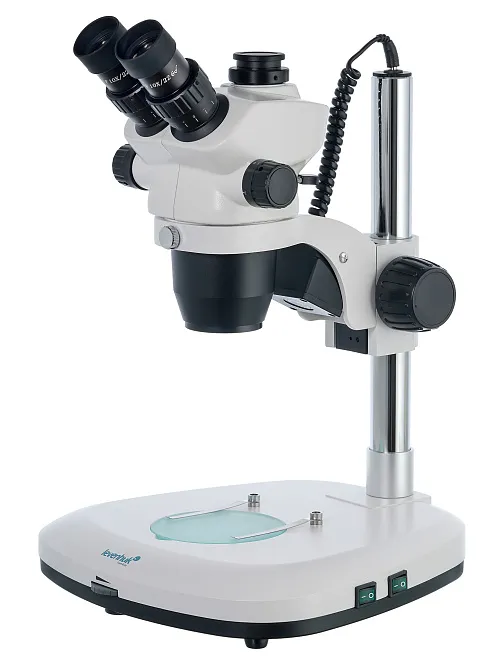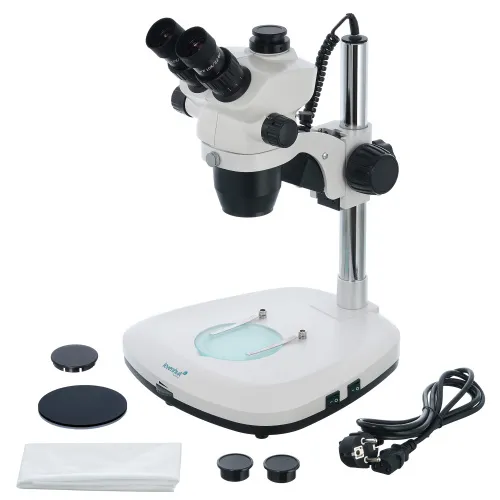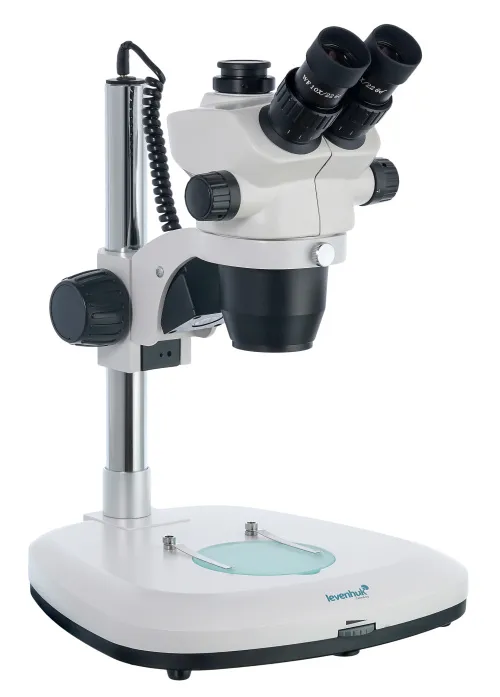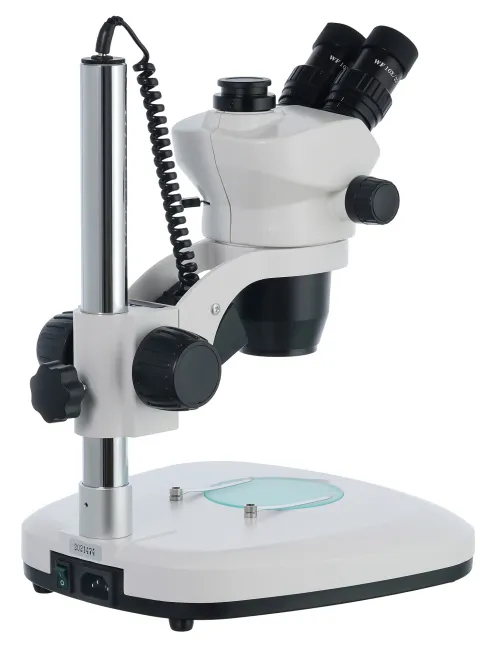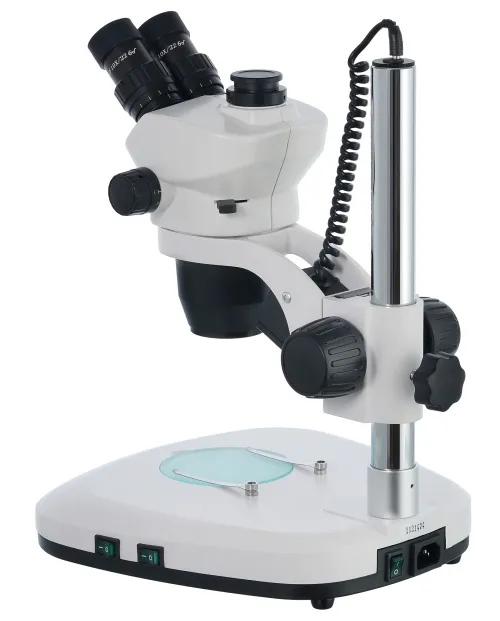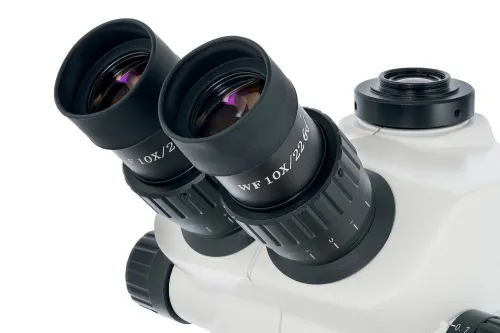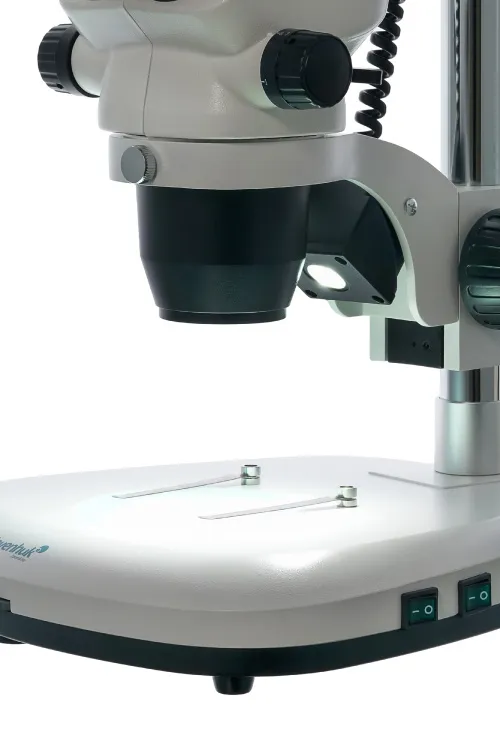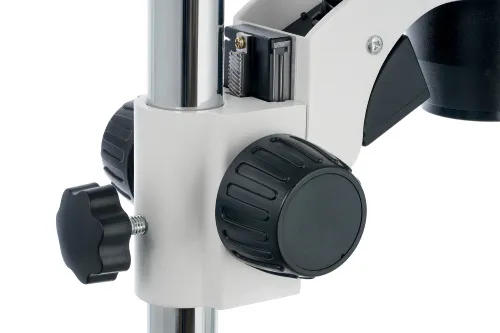Levenhuk ZOOM 1T Trinocular Microscope
Magnification: 7–45x. Stereo microscope with a zoom objective and 235mm working distance
| Product ID | 76057 |
| Brand | Levenhuk, Inc., USA |
| Warranty | lifetime |
| EAN | 5905555005386 |
| Package size (LxWxH) | 45x34x37 cm |
| Shipping Weight | 5.76 kg |
The Levenhuk ZOOM 1T trinocular microscope is designed for studying three-dimensional samples: coins, jewelry, minerals, clockwork mechanisms, textiles, and biological materials. A large working distance allows for studying even very large samples. The smooth variable magnification allows for choosing the most convenient magnification power in a wide range. Levenhuk ZOOM 1T microscope is a great choice for work and hobbies as well.
The microscope features a trinocular head that has a special vertical tube for installing a digital camera in it. The camera is not included in the kit. However, you can purchase it to use the microscope not only for visual observations but also for photo and video recording of research. The microscope's optics enable you to work with samples at magnification from 7 to 45 times and provide a good angle of view. A coarse focusing adjustment is available.
The lighting system consists of upper and lower LEDs with adjustable brightness. The light is powered by an AC power supply. The microscope body is made of robust metal, which is why the Levenhuk ZOOM 1T is a reliable and long-lasting optical instrument.
Features:
- Stereoscopic (3D) image
- Smooth variable magnification in the range from 7 to 45 times
- Rotatable trinocular head inclined at 45°
- Large working distance: 235mm
- Dual LED light with brightness adjustment and an AC power supply
The kit includes:
- Microscope
- Wf10x eyepieces with eyecups (2 pcs)
- Zoom objective: 0.7–4.5x
- Stage made of matte glass
- Black-and-white double-sided plate
- Power cord with an AC adapter
- Dust cover
- User manual and lifetime warranty
Caution: Please refer to the specifications table for the correct mains voltage and never attempt to plug a 110V device into 220V outlet and vice versa without using a converter. Remember that mains voltage in the U.S. and Canada is 110V and 220–240V in most European countries.
Levenhuk Zoom 1T Microscope is compatible with Levenhuk digital cameras (additional cameras are purchased separately). Levenhuk cameras are installed in an eyepiece tube instead of an eyepiece.
| Product ID | 76057 |
| Brand | Levenhuk, Inc., USA |
| Warranty | lifetime |
| EAN | 5905555005386 |
| Package size (LxWxH) | 45x34x37 cm |
| Shipping Weight | 5.76 kg |
| Type | stereo/instrumental |
| Microscope head type | trinocular |
| Optics material | optical glass |
| Head | 360 ° rotatable |
| Head inclination angle | 45 ° |
| Magnification, x | 7 — 45 |
| Eyepiece tube diameter, mm | 30mm (binocular head), 1"x1/32" C-mount thread (third vertical tube) |
| Eyepieces | WF10x/22mm (2 pcs.) |
| Objectives | 0.7–4.5x (zoom) |
| Working distance, mm | 235 |
| Interpupillary distance, mm | 48 — 75 |
| Stage, mm | Ø95 |
| Stage moving range, mm | fixed |
| Stage features | two plates: black and white double-sided and matte glass, with clips |
| Eyepiece diopter adjustment, diopters | ±5 |
| Focus | coarse (50mm) |
| Body | metal |
| Illumination | LED |
| Brightness adjustment | ✓ |
| Power supply | 220V/50Hz |
| Light source type | upper: 3W LED, lower: 2W LED |
| Operating temperature range, °C | 5...+35 |
| Ability to connect additional equipment | compatible with any microscope digital camera |
| User level | beginners, experienced users |
| Assembly and installation difficulty level | easy |
| Application | for applied research |
| Illumination location | dual |
| Research method | bright field |
| Pouch/case/bag in set | dust cover |
We have gathered answers to the most frequently asked questions to help you sort things out
Find out why studying eyes under a microscope is entertaining; how insects’ and arachnids’ eyes differ and what the best way is to observe such an interesting specimen
Read this review to learn how to observe human hair, what different hair looks like under a microscope and what magnification is required for observations
Learn what a numerical aperture is and how to choose a suitable objective lens for your microscope here
Learn what a spider looks like under microscope, when the best time is to take photos of it, how to study it properly at magnification and more interesting facts about observing insects and arachnids
This review for beginner explorers of the micro world introduces you to the optical, illuminating and mechanical parts of a microscope and their functions
Short article about Paramecium caudatum - a microorganism that is interesting to observe through any microscope

